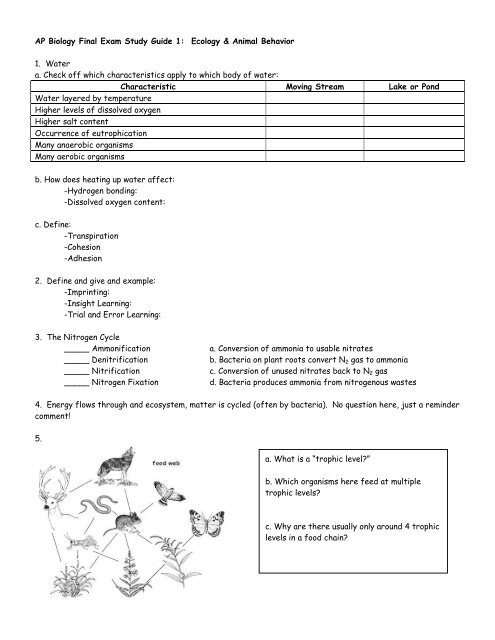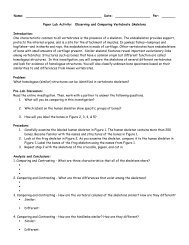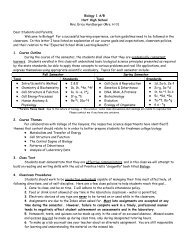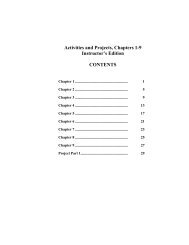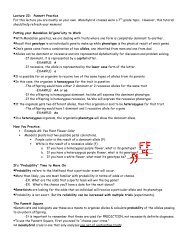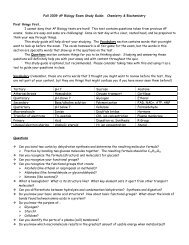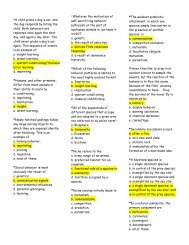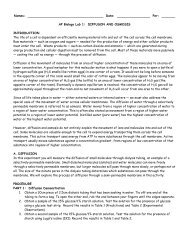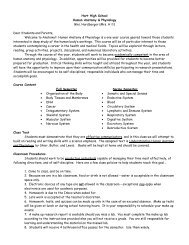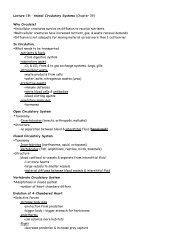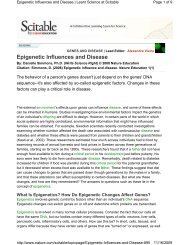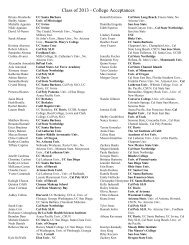AP Biology Final Exam Study Guide 1: Ecology & Animal Behavior 1 ...
AP Biology Final Exam Study Guide 1: Ecology & Animal Behavior 1 ...
AP Biology Final Exam Study Guide 1: Ecology & Animal Behavior 1 ...
You also want an ePaper? Increase the reach of your titles
YUMPU automatically turns print PDFs into web optimized ePapers that Google loves.
<strong>AP</strong> <strong>Biology</strong> <strong>Final</strong> <strong>Exam</strong> <strong>Study</strong> <strong>Guide</strong> 1: <strong>Ecology</strong> & <strong>Animal</strong> <strong>Behavior</strong>1. Watera. Check off which characteristics apply to which body of water:Characteristic Moving Stream Lake or PondWater layered by temperatureHigher levels of dissolved oxygenHigher salt contentOccurrence of eutrophicationMany anaerobic organismsMany aerobic organismsb. How does heating up water affect:-Hydrogen bonding:-Dissolved oxygen content:c. Define:-Transpiration-Cohesion-Adhesion2. Define and give and example:-Imprinting:-Insight Learning:-Trial and Error Learning:3. The Nitrogen Cycle_____ Ammonification_____ Denitrification_____ Nitrification_____ Nitrogen Fixationa. Conversion of ammonia to usable nitratesb. Bacteria on plant roots convert N 2 gas to ammoniac. Conversion of unused nitrates back to N 2 gasd. Bacteria produces ammonia from nitrogenous wastes4. Energy flows through and ecosystem, matter is cycled (often by bacteria). No question here, just a remindercomment!5.a. What is a “trophic level?”b. Which organisms here feed at multipletrophic levels?c. Why are there usually only around 4 trophiclevels in a food chain?


